Post by Liam Armstrong, high school senior at Pacific Crest Community School, avid cyclist, and lover of math and science.
Liam approached NW Noggin this year with fascinating questions about why it was so difficult to adapt to a bicycle built to defy rider expectations. He first wanted to build his own “reverse-steering” bicycle, and then understand what happened in own brain when his implicit assumptions were challenged, what changed as he kept riding and improved, and what this suggests about how we interact with our world.
Here’s what Liam discovered…

I was initially introduced to the concept of a reverse-steering bike at a Mini-Maker Faire held at the Oregon Museum of Science and Industry (OMSI) in 2015.
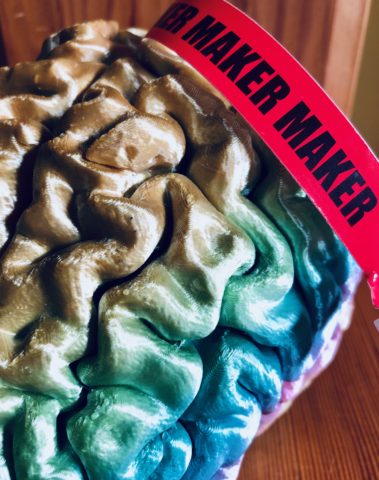
LEARN MORE: Noggin @ Mini-Maker Faire – How to 3D Print a Brain
A San Francisco-based organization called Cyclecide had set out various unconventional bikes for people to try riding. As both an avid cyclist and unicyclist, I was drawn to this station and proceeded to try riding each bike. Although I made many attempts at the reverse-steering bicycle, I could not ride it for more than 12 inches. Despite my determination to learn to ride it, I eventually had to leave OMSI unfulfilled.

LEARN MORE: The people and freak bikes of Cyclecide (Photos)
LEARN MORE: Build a Reverse Steering Bike!
Four years later, I was tasked with coming up with an idea for my high school’s notorious senior “dissertation.” Having taken an introductory neuroscience class earlier that year, I was eager to learn more about the brain.
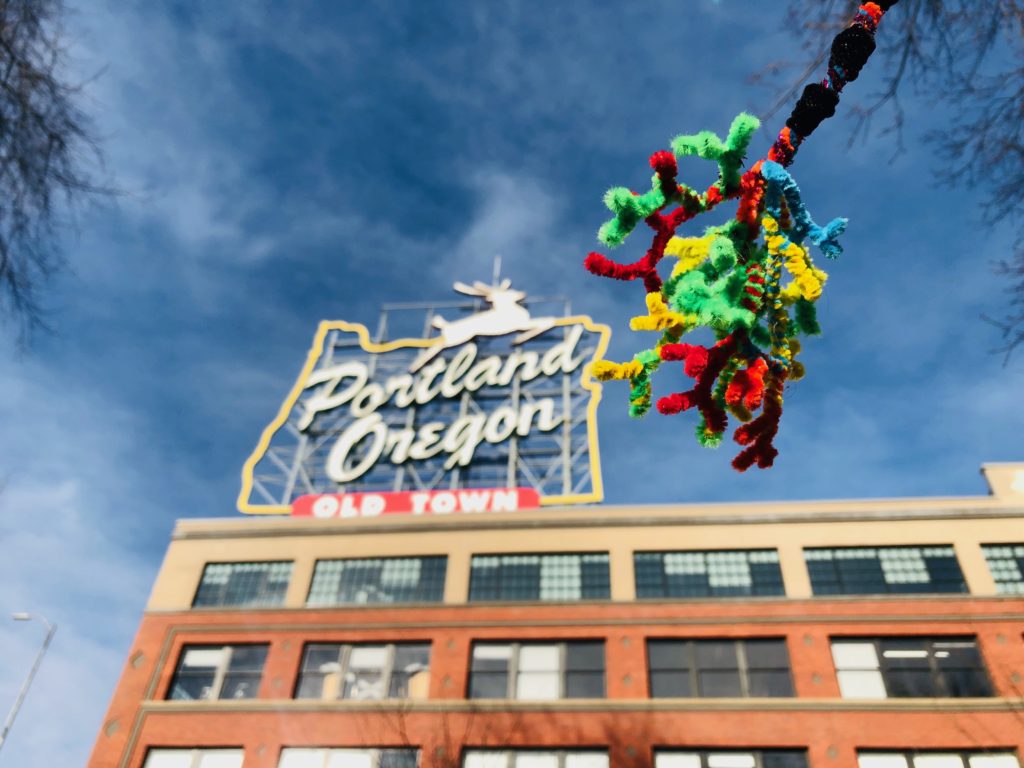
LEARN MORE ABOUT BICYCLING IN PORTLAND, OREGON: Bikeportland.org
The reverse-steering bicycle I had been so determined to ride seemed like the ideal doorway into neuroplasticity (the ability of our neural connections to change), the conscious awareness of unconscious, implicit brain functions, and the formation of new habits and skills. In mid-2019 I set out on this project with a bike to build, research to do, and a paper to write.
Building the bike
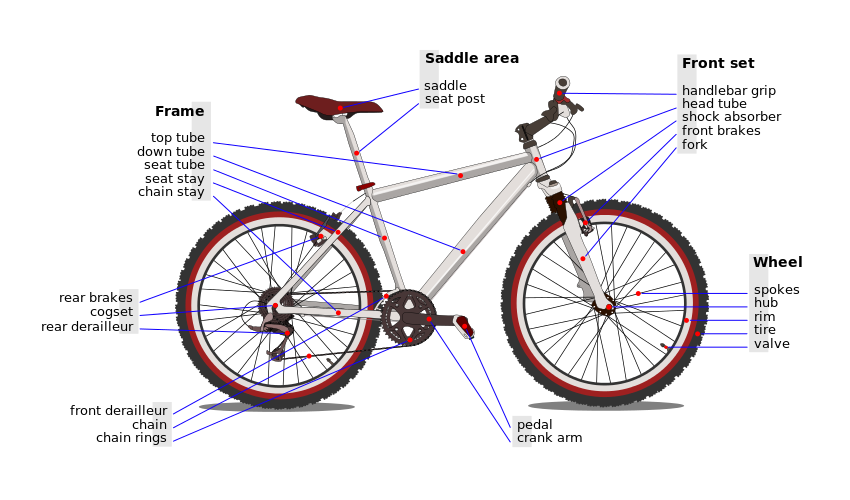
The reverse-steering bicycle itself is constructed from two conventional bikes. With the help of a fantastic Portland Community College welding instructor, I removed the head tube of one bicycle and welded it onto the head tube of the other bicycle. I cut both stems in half and welded them back together with a gear in the middle of each of them.
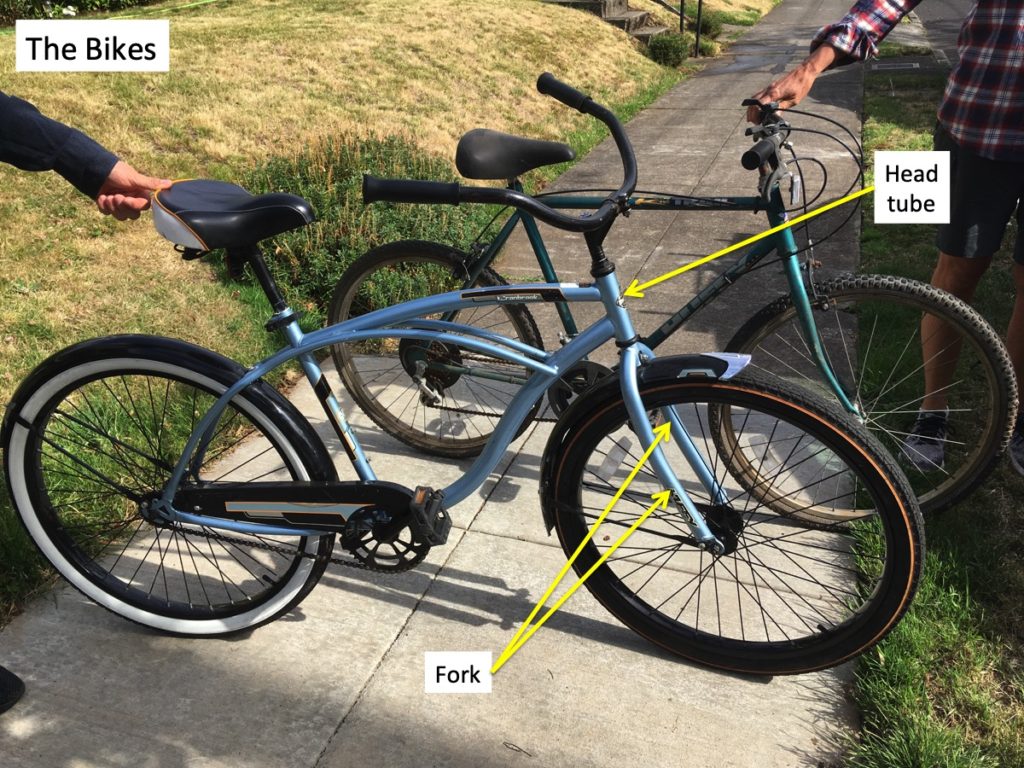
LEARN MORE: Welding Technology at Portland Community College
The handlebars I attached to the stem of the front head tube while leaving the bottom of the head tube open; I connected the fork to the second stem through the rear head tube, leaving the top open.
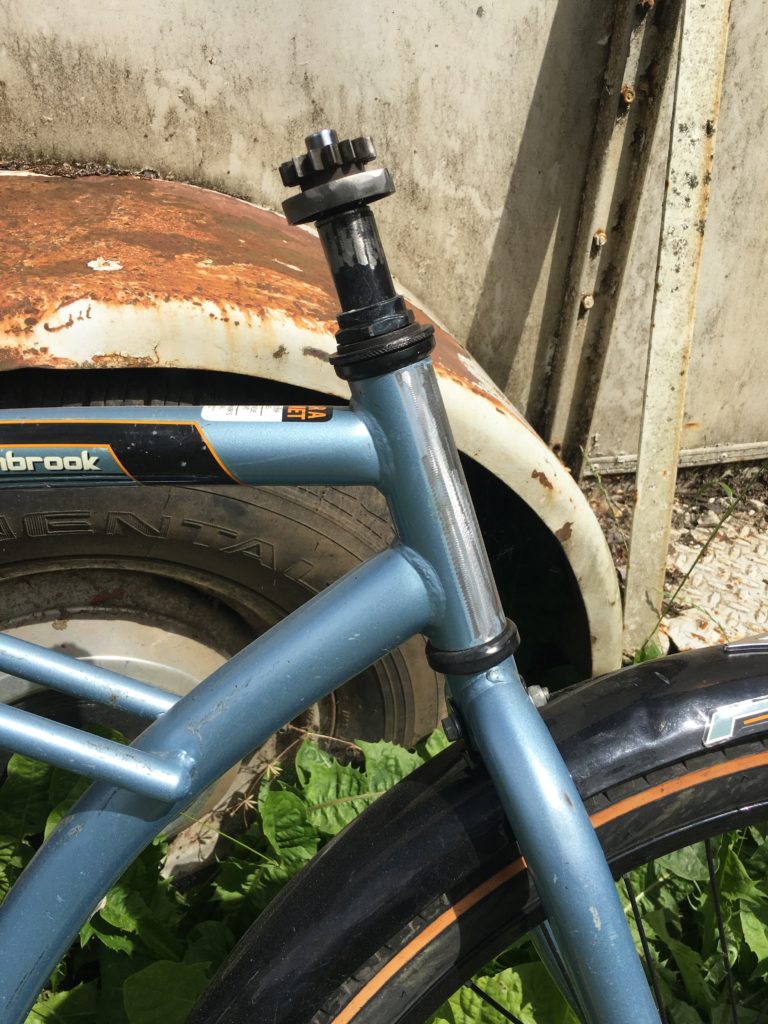
The gears inserted into the stems lay interlocked, effectively reversing the steering mechanism: When the handlebars turn left, the front wheel turns right, and vice versa.

Within two weeks of building the bike, I could ride it (almost) without issues. But this new skill did not come easily.

Riding the Bike!
“Life is like riding a bicycle. To keep your balance you must keep moving”
— Albert Einstein
Impatient to take my new wheels for a spin, I got on the bike before it was completed…and perhaps before it was safe! The handlebars were not in line with the wheel and I was wearing neither shoes nor a helmet.
Rather than attempting to pedal the bike, I moved the bike by pushing my feet off the ground, just as a child rides a scoot bike. Although I did not continue to ride the bike with my feet on the ground after I fixed the handlebars, I believe the initial day and a half of riding like this contributed greatly to my ability to ride the bike in the long run.
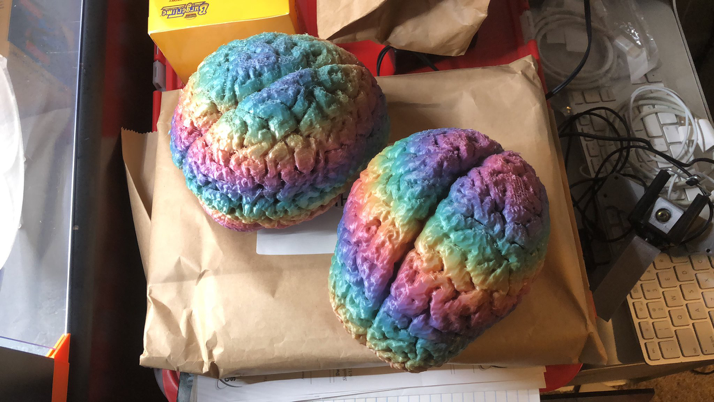
When riding any bicycle, the rider maintains balance through a series of small, subconscious micro-adjustments to muscles, including those gripping the handlebars. On a reverse-steering bicycle, the brain initially applies the same adjustments as it does on a conventional bicycle.

However, instead of helpful, these implicit, unconscious adjustments cause the rider (that’s me!) to fall, as they are the exact opposite of the adjustment needed.
LEARN MORE: Cerebral activation during bicycle movements in man
LEARN MORE: Brain activity and perceived exertion during cycling exercise: an fMRI study
LEARN MORE: Bicycling and Walking are Associated with Different Cortical Oscillatory Dynamics
Riding changed my brain
Adapting to this new bicycle required actual physical changes in the wiring of my own brain. These changes take place in all of us as we practice and acquire new skills.
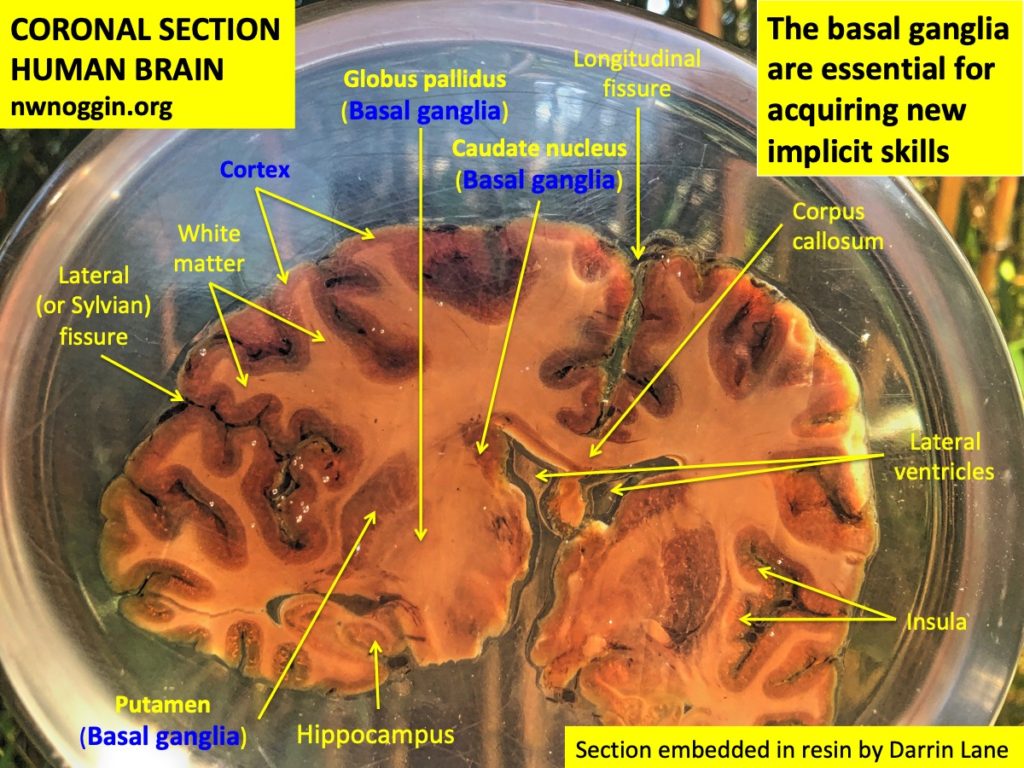
This essential rewiring and reshaping of neural connections occurs partly in subcortical (“below” the cortex) brain areas known as the basal ganglia (see images) and also in circuits in our cerebellum.

These changes serve to better link the unusual sensory inputs from riding the reverse-steering bike – including vestibular (our sense of balance and acceleration), somatosensory (touch and what’s called proprioception, the awareness of our body’s spatial position) and visual (what we see) – to the quick, required muscular adjustments that let us ride it well.
LEARN MORE: Dynamic reorganization of striatal circuits during the acquisition and consolidation of a skill
LEARN MORE: Neural basis of procedural memory
LEARN MORE: Basal ganglia @ Beaumont!
LEARN MORE: The effect of cycling on cognitive function and well-being in older adults
Reducing stress helps
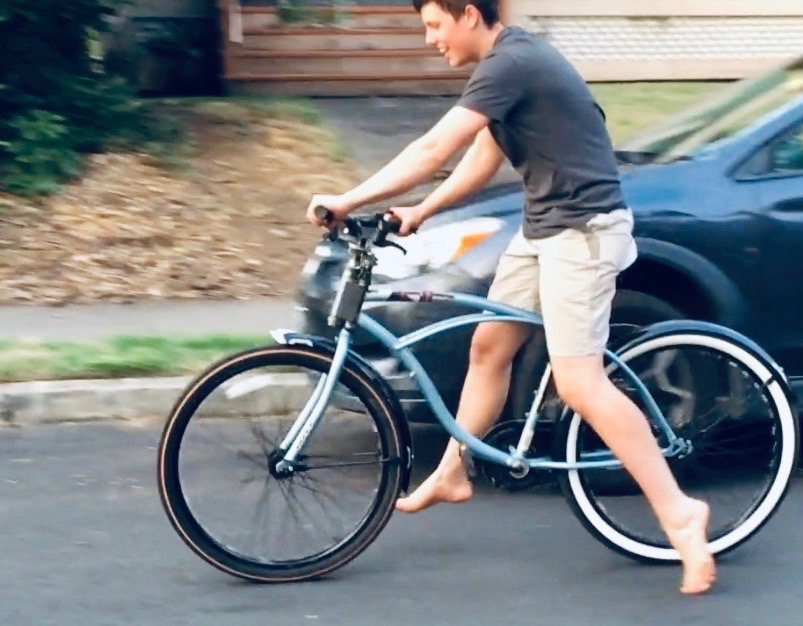
By putting my feet on the ground, I was eliminating the need to adjust my balance through a series of small, subconscious adjustments to the handlebars as would have been required had I attempted to ride with my feet on the pedals. This gave my ingrained vestibular and motor reflexive responses a chance to adapt to the reversed steering in a slower and more controlled environment. Although the probability of error was still high, having my feet touching the ground at all times made it so that a mistake would have to be big for it to throw off my balance completely.
Learning is work! Sleep is essential
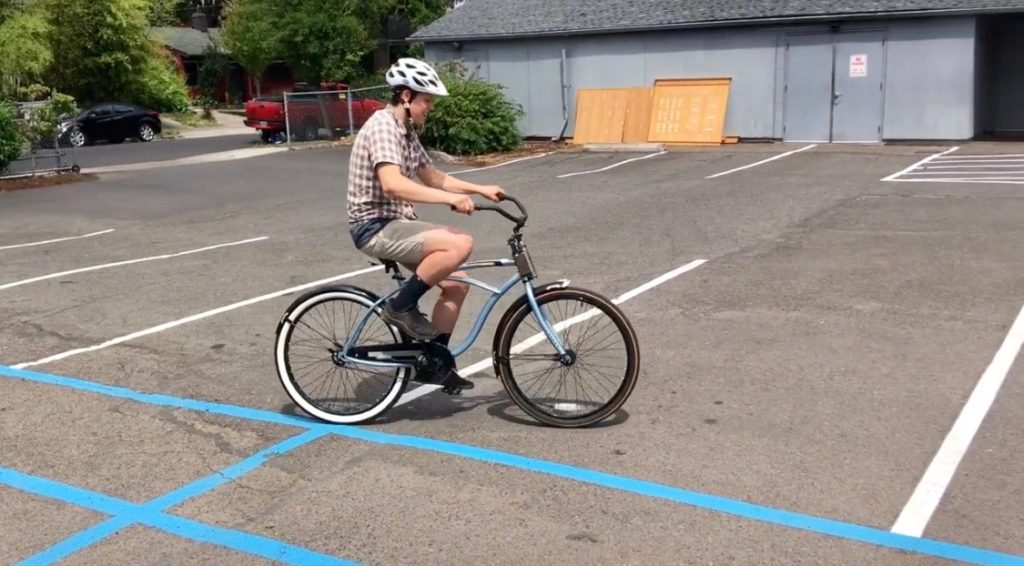
“If you do something right the first time, then it’s not hard enough.”
— Danny MacAskill
While learning to ride the reverse-steering bicycle, I found that I could not focus on riding for more than ten minutes at a time. As the duration of my time attempting to ride the bicycle increased, my focus decreased, as did my ability to retain and process information about how to ride the reverse-steering bicycle. As it was unproductive – and dangerous! – to continue riding after my focus had expired, I rarely attempted to ride the bicycle for more than ten minutes at a time. This increased the number of days on which I rode the bicycle (and therefore the cumulative amount of sleep) without increasing the aggregate riding time.
And sleep improves memory.
LEARN MORE: About Sleep’s Role in Memory
LEARN MORE: Sleeping brain, learning brain. The role of sleep for memory systems
LEARN MORE: Consciousness and the Consolidation of Motor Learning
LEARN MORE: Appraising the brain’s energy budget
Motivated? Then it’s easier to learn
Motivation also played a key role in my learning curve: It increased my alertness and improved cognition, including my ability to focus, persist, remember and enjoy what I was doing.
“Nothing compares to the simple pleasure of a bike ride.”
— John F. Kennedy
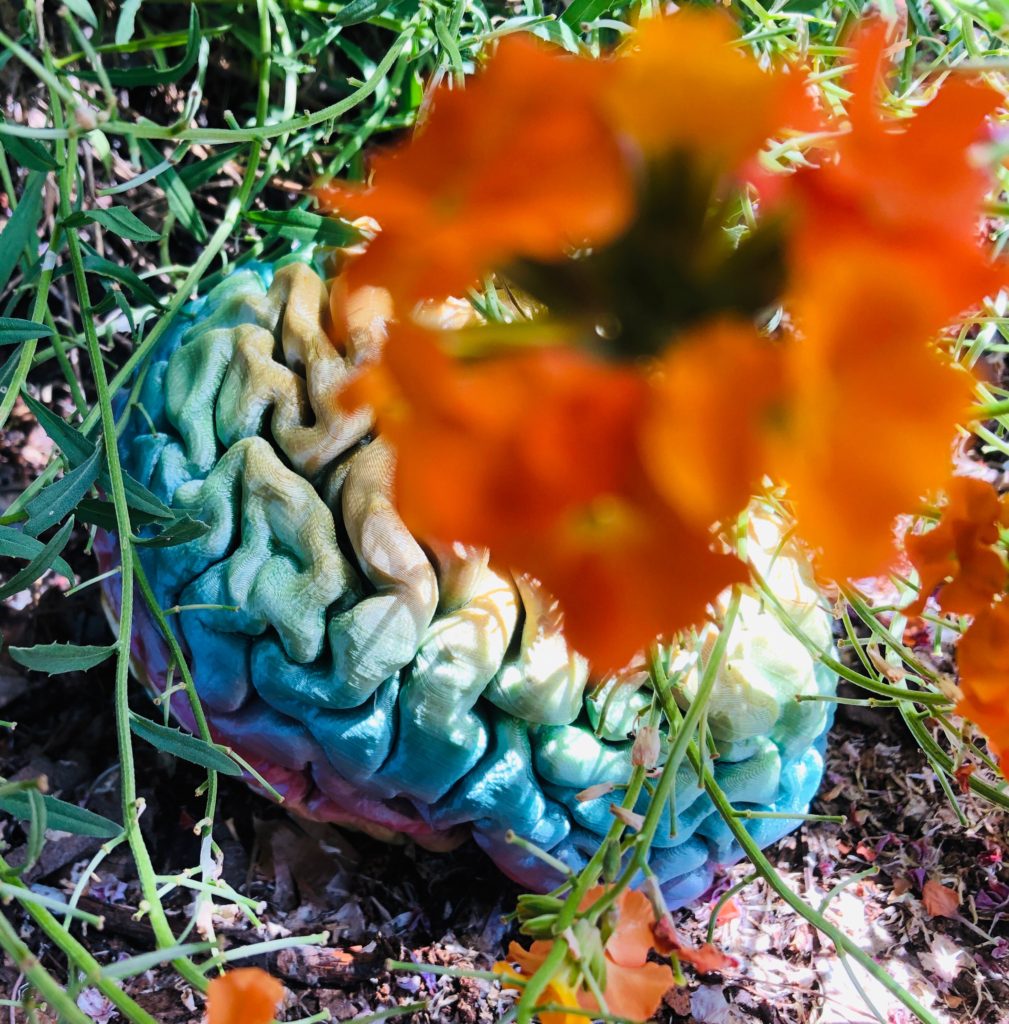
Higher levels of enjoyment led to more willingness to spend time attempting to ride the bicycle and lower levels of frustration. Frustration has a negative impact on the rider’s ability to override interfering implicit responses and causes the rider (me!) to fall more often, thus compounding the rider’s frustration. Additionally, studies have linked motivation with a temporary increase in neuroplasticity, therefore enhancing my ability to create new pathways that enable riding the reverse-steering bicycle.
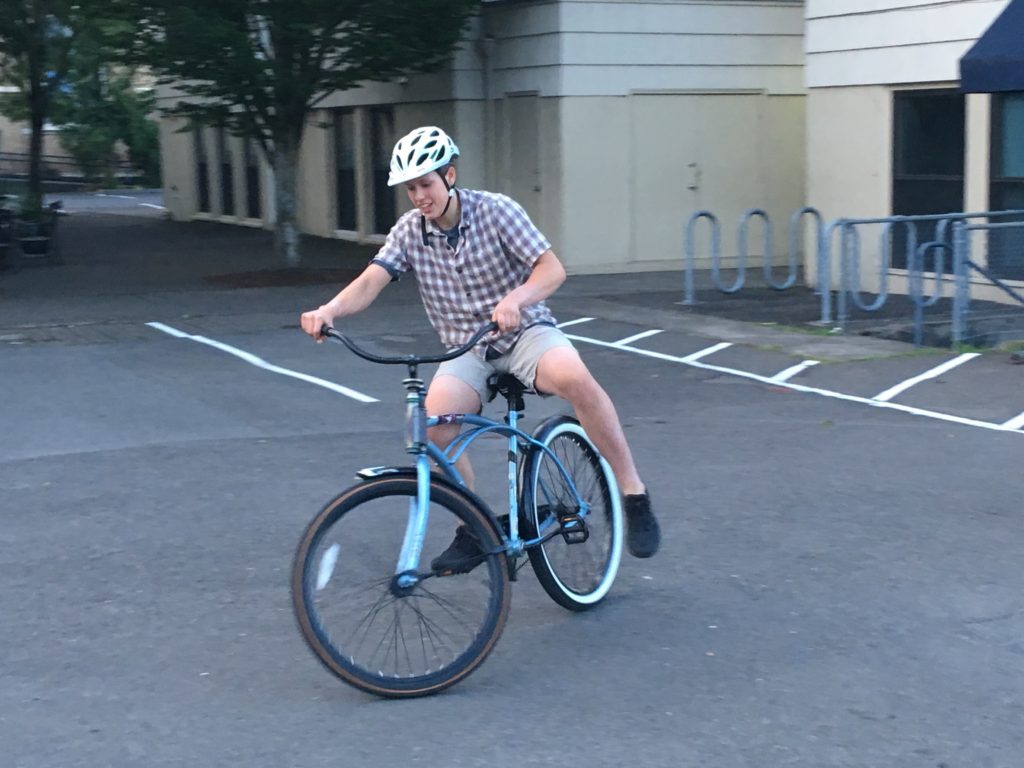
LEARN MORE: The Emerging Neuroscience of Intrinsic Motivation
LEARN MORE: Mechanisms of motivation–cognition interaction: challenges and opportunities
LEARN MORE: Casting a Wide Net: Role of Perineuronal Nets in Neural Plasticity
LEARN MORE: Caught in the Net: Perineuronal Nets and Addiction
Different sensory inputs helped too
As an avid cyclist, one might assume that it would be harder for me to learn to ride the reverse-steering bike. Because I have ridden conventional bicycles for thousands of hours, my implicit memories for how to ride a regular bicycle are deeply ingrained and thus harder to override or change.
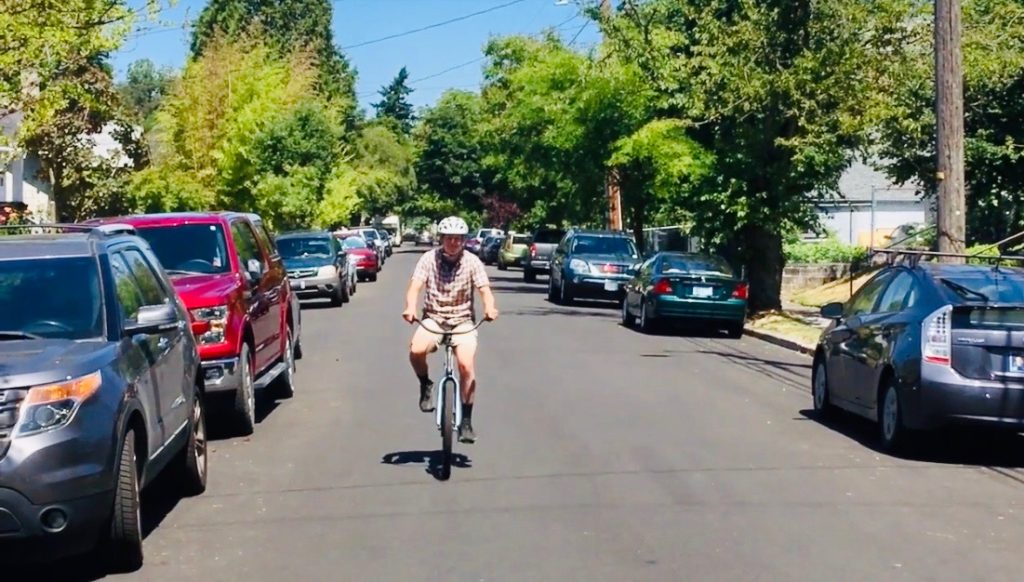
However, the connection is not so simple. For one thing, the bicycle I regularly ride and the reverse-steering bicycle have many differences. The reverse-steering bicycle has coaster breaks, play in the handlebars, and markedly different geometry from my normal bicycle. Similarly, the ways in which I learned to ride the reverse-steering bicycle (such as riding it as a scoot bicycle, looking at the front wheel, using my knees for balance, and riding short distances in parking lots) differ greatly from the way I ride my regular bicycle. This made it easier to distinguish the two bicycles and led to fewer of the hindering neural pathways used in riding a regular bicycle to automatically transfer over to riding the reverse-steering bike.

Nevertheless, many of the neural pathways used while riding a regular bicycle are also used while riding the reverse-steering bicycle. In general, the more implicit the memory of riding a regular bicycle, the less effort the explicit memory has to exert in order to execute general cycling functions. This allows the conscious brain to spend more effort focusing on skills specific to riding the reverse-steering bicycle.
Yikes! Emotion restores old habits
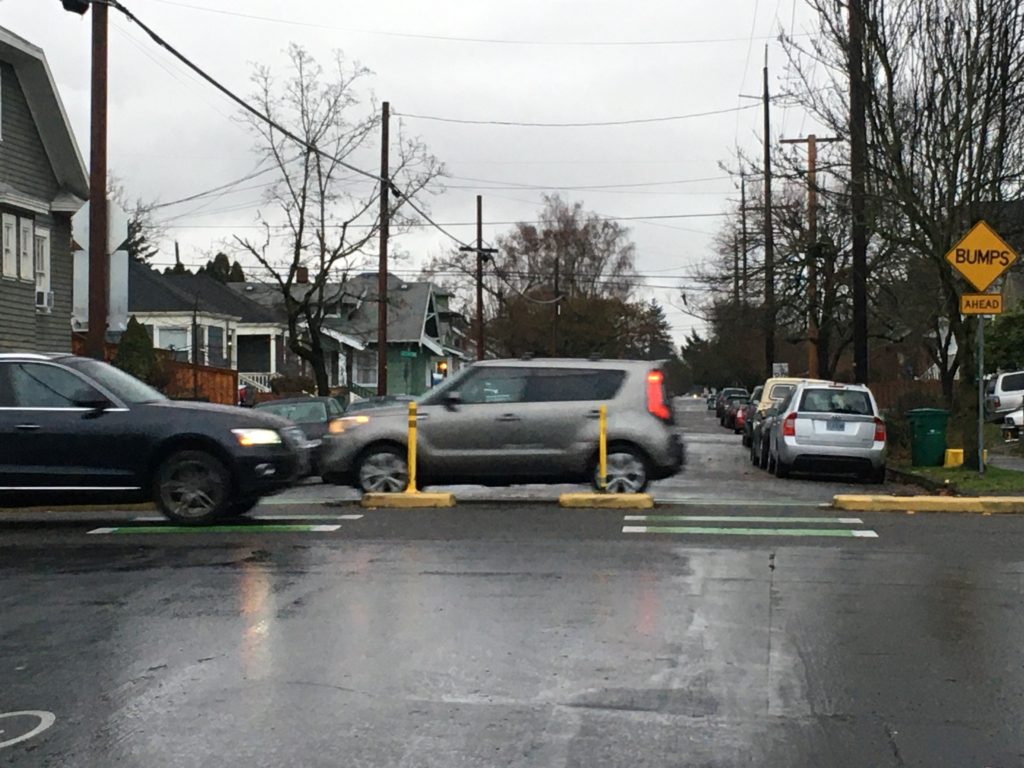
After approximately two weeks of riding the bike for about five to ten minutes per day I went on a longer ride of two miles. Although most of the ride was distraction free, I needed to cross a somewhat busy street on the way there and back. While approaching the intersection I began to think more about the logistics of stopping the bike, waiting for a break in traffic, and managing to ride through a four-foot gap in the concrete car barrier. About half a block away from the intersection, I suddenly turned into a parked car, my preoccupation with the intersection limiting the cognitive capacity I had available to focus on the reverse-steering bicycle. Similarly, on the way back I turned the wrong way, lost my balance, and had to put my foot down to avoid another accident. Stress caused me to revert to my old implicit responses, which weren’t appropriate for this bicycle.
This experience was revealing. Although I could ride with relative ease and had the capacity to think of other things while riding, a limit existed to the amount of focus I could dedicate to other tasks or thoughts without crashing that I never encounter while riding a conventional bicycle.
Learn More: How the brain pays attention
In short, the reverse-steering bicycle is an optimal example of how much our subconscious brain contributes to the execution of daily tasks. Although the concept of reversing the steering could not be simpler, riding this bicycle is an extremely difficult challenge.
However, motivation, challenge, neuroplasticity, sleep and some stress reduction allow the brain to adapt existing neural pathways, create new ones, and ultimately build the system needed for successfully riding the reverse-steering bicycle.

With time, practice and changes in my brain, it becomes – as the saying goes – just like riding a bike.
Special Thanks to Bill Griesar for providing information and support.


